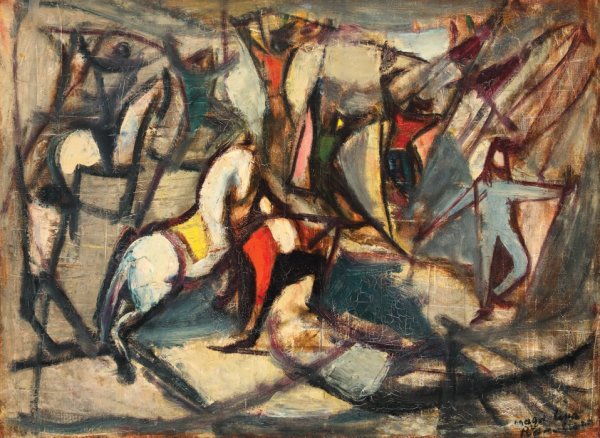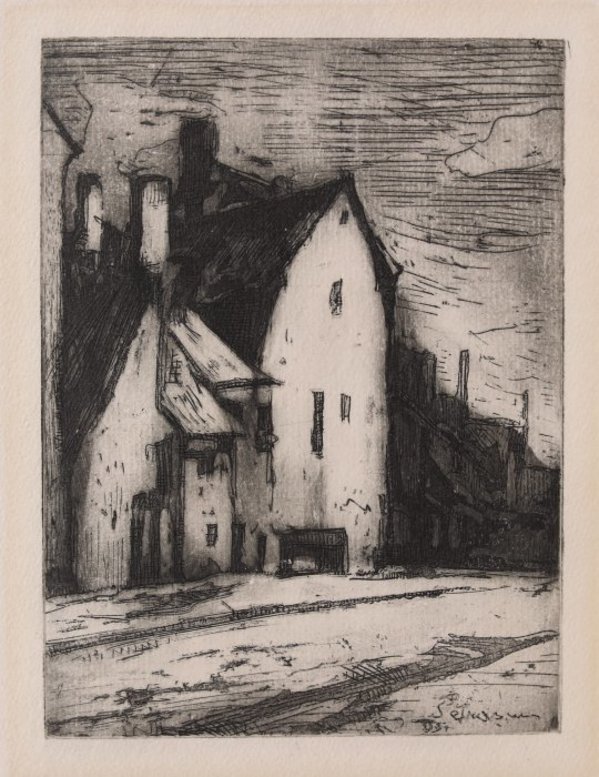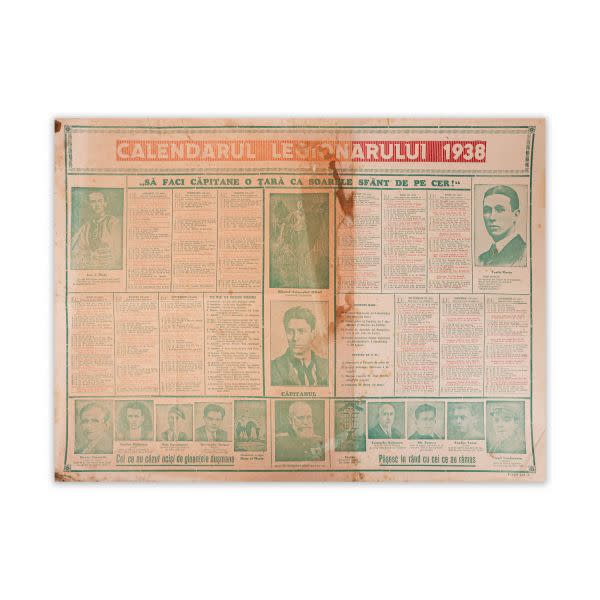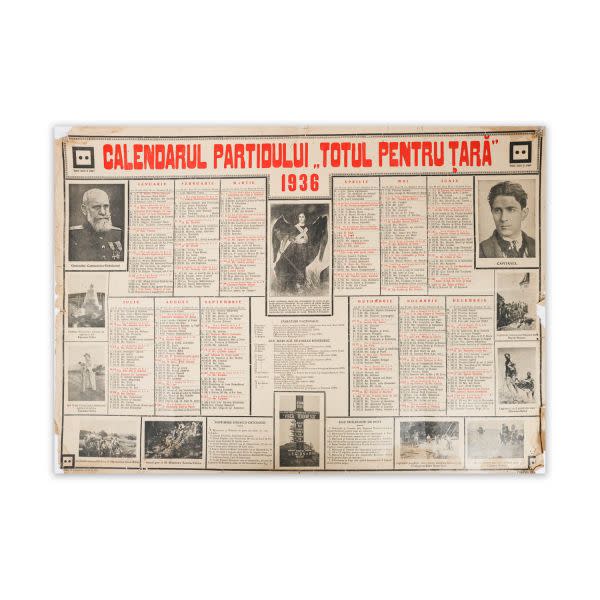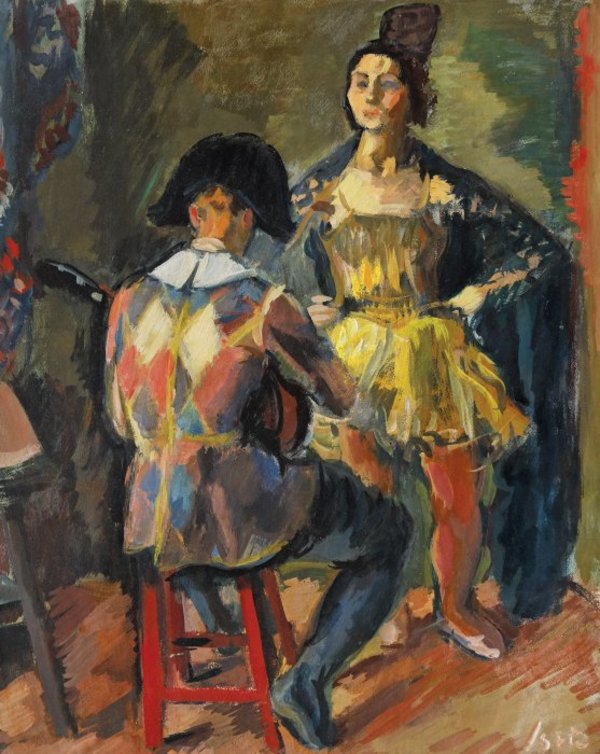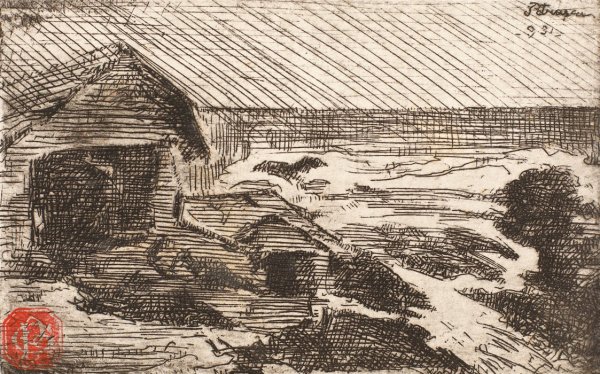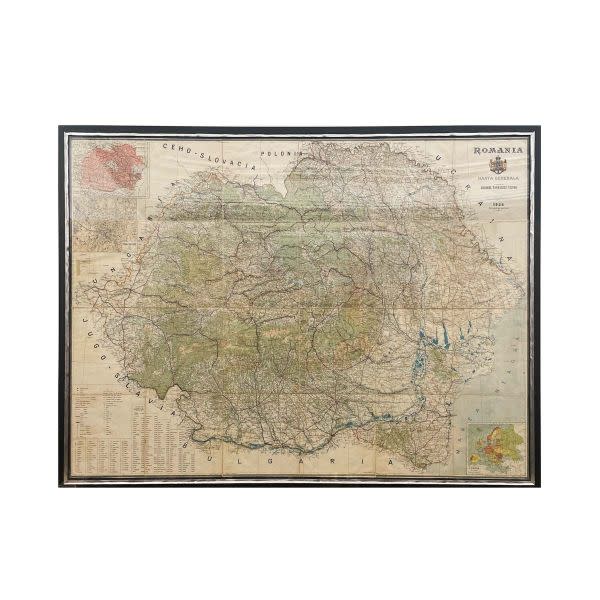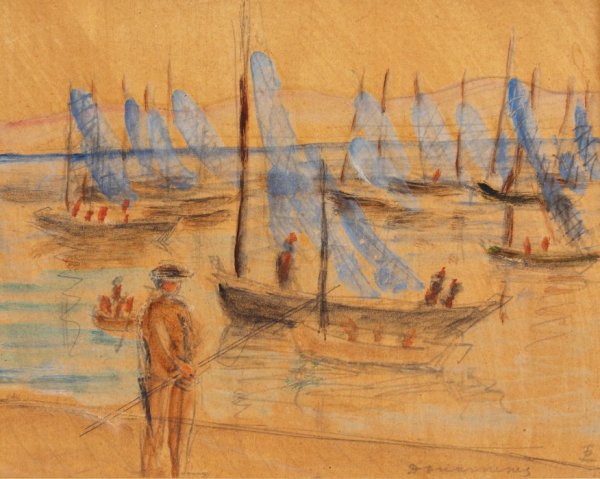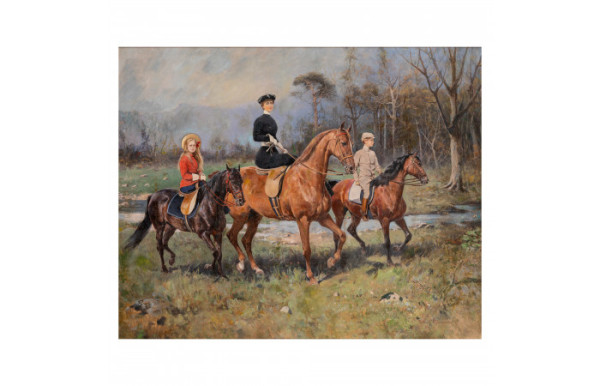- Nicolae Tonitza
- Interior Courtyard at Mangalia, late 1920s
- Oil on cardboard
- 59 x 49 cm
- Signature: signed bottom right, in black, "Tonitza"
-
Installed
The year 1925 marks the meeting of Nicolae Tonitza with the small settlement on the Black Sea Shore: Mangalia - a location to which the artist returned year after year, until 1930. His constant returns to the Dobrogea land open the way to a vast period of landscapes, among which we distinguish the torrid shore bathing in the sun. However, Tonitza’s journey along the land of Dobrogea did not necessarily materialize in the form of marine landscapes; instead, above all, it took on humble forms, which were translated into his work in slum corners, peasant interiors, houses, cafes or courtyards. This period’s specific palette borrowed from the colours of Dobrogea and translated into the author’s canvases in the ochre ground marked by heat, in the copper of the wooden gates or in the light blue of the cloudless sky. A painter of the atmosphere, Tonitza captured the local colour, in just a few strokes, and he skilfully impregnated the Dobrogea light in the canvases whose genesis is attributed to the space on the Black Sea shore. In his radio intervention of 1932, transposed into a vast essay totalling no less than twelve pages, Tonitza emphasized the importance of the pioneer-innovative painter in revealing and popularizing the spaces that later enjoy prodigious reputation. He thus insists on promoting the concept of vacationist artists looking for unexplored places that they can inaugurate, for the first time, in their specific pictorial manner. Therefore, Nicolae Tonitza reveals himself as having equal passion both in the painted or drawn work, and in the written one. The correspondence of the two results in common means and equivalent spheres of interest in representing the artist’s reality. The art critic Tonitza reserves the right to return, by writing, to his already configured visual work. His comments are intended to outline, explain, or enhance the creative potential of the painter or of the cartoonist. There is therefore an analytical doubling, whose ultimate goal is to make art for art’s sake, art for the people’s sake, but also art for one self's sake. Dobrogea remains, for the artist, one of the most picturesque provinces, but due to its ethnic character, it presents the least Romanian specificity. In the landscapes from this stage of creation, Tonitza often presents himself meditatively, in a long contemplation of the subject he is about to transpose on canvas. The hot Dobrogea afternoons and the heat of the sun baths on the Black Sea shore contribute to a thoroughness of the vocation of colour, a colour that the artist uses both as a means for expressing ideas and as a way of illustrating the deepest feelings. The specific feature of Tonitza’s landscapes remains, however, the absence of the human element. The decorative rhythmicity of the clothes hanging on the lines, of the gates, or of the cafes, all deprived of the presence of the characters, appear before the viewers as an act of an Ionesco play, in which the empty chairs strung together seem to have a monologue in their solitude. (D.C.)
- Collections: Contemporary/Modern/Abstract


